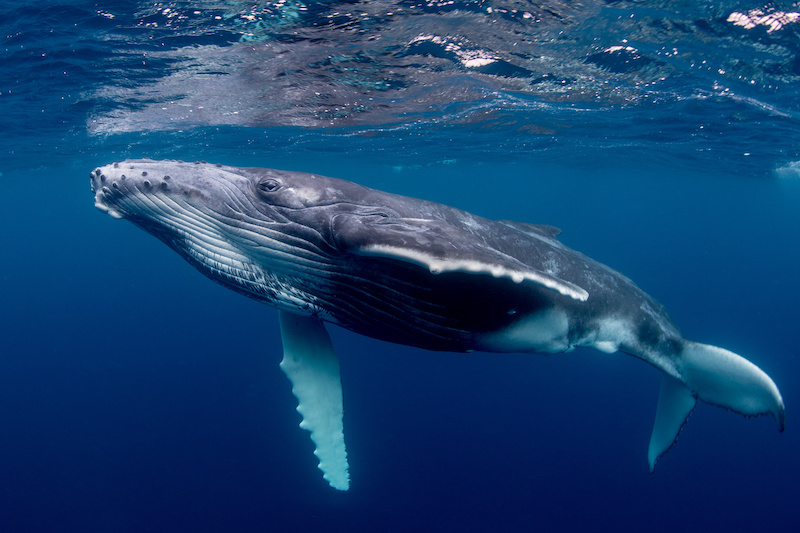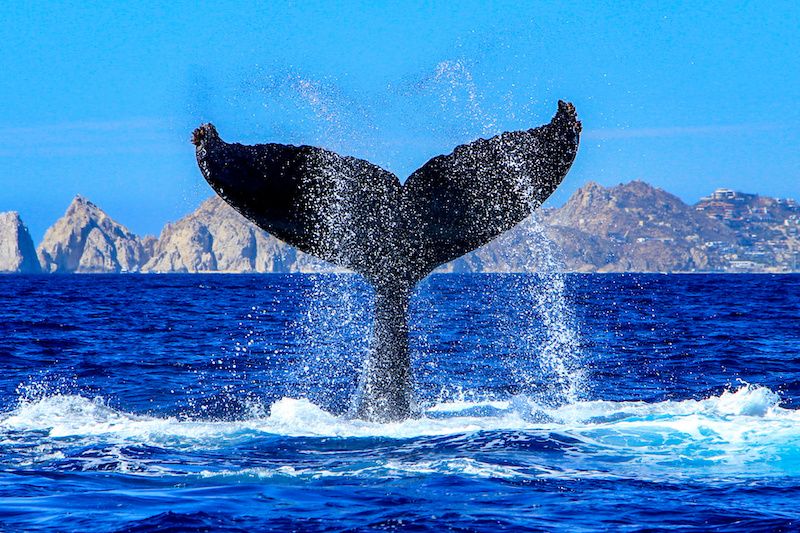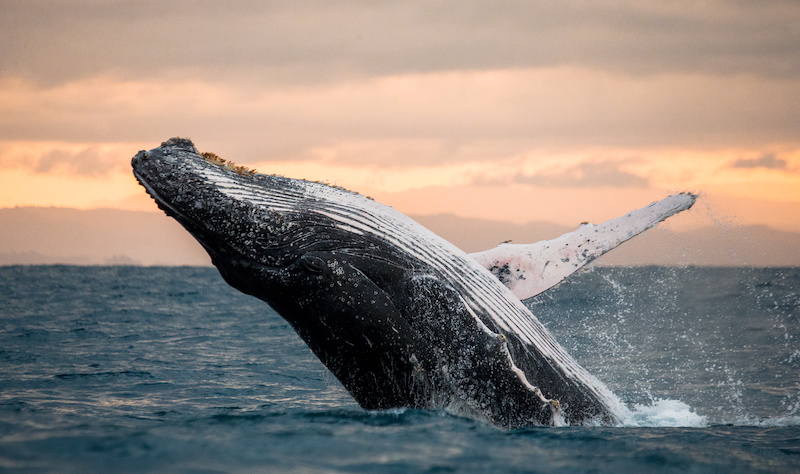
Humpback whales, giants of the seas, are fascinating and iconic creatures, especially in Caribbean waters. This article takes you on a journey to discover the unique characteristics of this marine mammal, their natural habitat, reproductive habits, and diet. Get ready to dive into the world of these marine wonders.
Characteristics of the Humpback Whale
The humpback whale (Megaptera novaeangliae), a fascinating species of cetaceans, is distinguished by several remarkable characteristics that make it an iconic creature of the oceans. These mammals, measuring between 12 and 16 meters and weighing up to 30 tons, are known for their long pectoral fins, which can reach up to one-third of their total length, a unique feature among cetaceans. Their skin is often marked with scars and parasites, giving them a distinctive appearance. Their head and lower jaw are equipped with nodules called tubercles, which are actually hair follicles and play a crucial role in their sensitivity to environmental stimuli.
These whales are also famous for their acrobatic behaviors on the surface, such as breaching and tail or flipper slapping. These actions are not only spectacular but also contribute to communication and perhaps the removal of parasites. Their lifespan varies between 45 and 50 years, although some individuals can live longer.
The humpback whale has a complex vocal system used in the songs of males, which are among the most varied and longest in the animal kingdom, lasting up to twenty minutes and repeating for hours. These songs are a crucial element of their reproductive behavior and are an important study subject for scientists.
These characteristics, combined with their ability to migrate over long distances – traveling thousands of kilometers between feeding areas in cold waters and breeding areas in tropical waters – make the humpback whale a fascinating species vital to marine biodiversity. Their presence in the Caribbean is a living reminder of the richness and diversity of life in our oceans.

Habitat of the Humpback Whale
The humpback whale (Megaptera novaeangliae), known for its impressive migrations, inhabits a variety of marine ecosystems worldwide. These majestic creatures spend a significant portion of their lives in the cold and nutrient-rich waters of the poles, ideal for their intensive feeding. However, they migrate annually to warmer tropical waters for breeding and calving, a journey that often brings them to the magnificent waters of the Caribbean. During this time, this region becomes a crucial sanctuary for females and their calves, providing a safer and more favorable environment for the young ones.
The shallow and temperate waters of the Caribbean also provide an ideal habitat for whale watching, allowing researchers and enthusiasts to better understand and appreciate these marine giants. The preservation of these diverse habitats is essential for the species’ survival, ensuring a healthy and continuous life cycle for these oceanic travelers.
Reproduction in the Humpback Whale
The reproduction of humpback whales (Megaptera novaeangliae) is a fascinating aspect of their life cycle, involving annual migrations over long distances. These sea giants migrate to tropical and subtropical waters, such as those in the Caribbean, for their breeding season. Females give birth every two to three years, after a gestation period of about 11 months. Calves, born in these warm and secure waters, remain closely bonded to their mothers during the first year, during which they rely entirely on them for food and protection.
During the mating season, males compete to attract the attention of females, often through melodious and complex songs, considered one of the most sophisticated vocalizations in the animal kingdom. These songs can play a crucial role in courtship behavior and in establishing dominance. The humpback whales’ ability to navigate vast distances between their feeding and breeding grounds is a remarkable trait that highlights their incredible adaptation to marine life.

Diet of the Humpback Whale
The diet of the humpback whale (Megaptera novaeangliae) is primarily composed of small fish and large quantities of krill. These sea giants employ a unique feeding technique called “lunge feeding,” where they dive into schools of krill or fish, mouths wide open, engulfing large amounts of water and food. They then use their baleen plates to filter the water, retaining only the prey. This method allows whales to consume up to 1,360 kilograms of food per day during feeding seasons.
Humpback whales are also known for their cooperative feeding behavior, including the bubble-netting technique, where they create circles of bubbles to trap and concentrate fish before engulfing them. This rich diet and effective hunting method are crucial for their survival as they store the energy needed for migration and reproduction. This feeding strategy showcases the remarkable intelligence and adaptability of the humpback whale, emphasizing its vital role in the marine ecosystem.
DISCOVER ALL CETACEAN SPECIES THAT CAN BE FOUND NEAR THE COASTS OF MARTINIQUE: